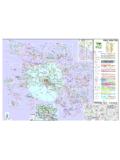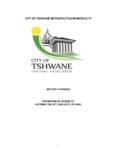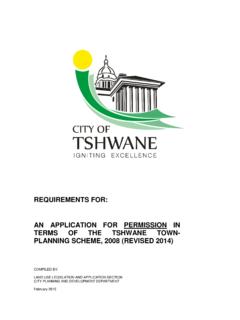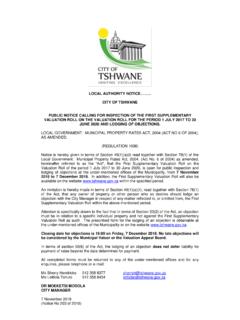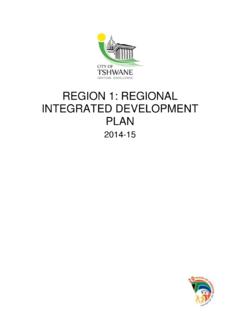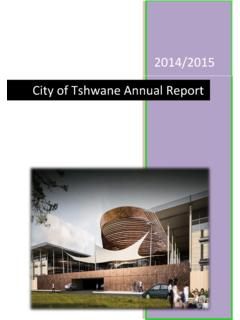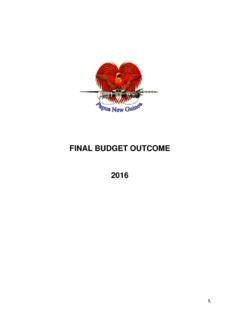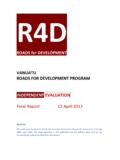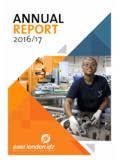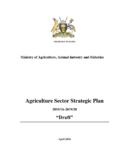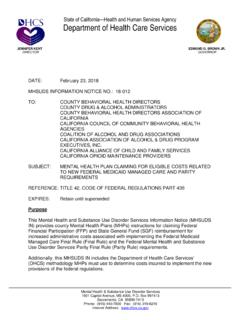Transcription of www.tshwane.gov.za
1 City of Tshwane 2016 /21 IDP May 2016 The culmination of the first decade of game-changing of Tshwane Vision 2055 21 Table of Contents PREAMBLE: 2016 /21 INTEGRATED DEVELOPMENT PLAN .. 3 1. INTRODUCTION, CONTEXT AND OVERVIEW .. 4 2. SITUATIONAL ANALYSIS .. 13 3. STRATEGIC CONTEXT .. 43 4. GOVERNANCE AND INSTITUTIONAL ARRANGEMENTS .. 154 5. INTER-GOVERNMENTAL ALIGNMENT .. 167 6. COMMUNITY PARTICIPATION .. 184 7. SPATIAL DEVELOPMENT FRAMEWORK (Summary) .. 200 8. CAPITAL INVESTMENT FRAMEWORK .. 218 9. PERFORMANCE MANAGEMENT .. 260 10. CITY OF TSHWANE PERFORMANCE SCORECARD FOR 2016 2021 .. 274 11. FINANCIAL PLAN .. 286 22 PREAMBLE: 2016 /21 INTEGRATED DEVELOPMENT PLAN The 2016 /21 IDP presented in this document is significant for the City in two ways. First, the document is fourth IDP that the City has developed since the establishment of local government in terms of the Local Government: Municipal Local Government Structures Act (Act No.)
2 117 of 1998). Second, this IDP provides a concrete plan towards realising the first decade of game changing as captured in the Tshwane Vision 2055 through outcomes based planning. The development of this IDP has taken into consideration a number of factors: legislated and contextual and among these is the input gathered from extensive public participation processes facilitated by the City. This IDP is developed on the foundation of the achievements of the previous terms of office and a sterling record of service delivery of the City which has been achieved through coordinated governance, accountability and putting the citizenry first. The IDP still seeks to ensure that in the development trajectory of the City: A people centred development is achieved and engagement with communities to foster participation is achieved; Delivery of basic services in an efficient and effective manner is sustained; Good governance and accountability is strengthened and improved; Sound financial management towards improved delivery on the mandate of the City is realised; and Ensuring that the City is adequately skilled by building capabilities within the administrative structures of the City.
3 The IDP presented here in, provides a solid plan that is linked to the financial capabilities of the City as detailed in the 2016 /19 MTREF and has carefully been drafted to achieve spatial integration. This IDP document is also supported by the 2016 /17 Service Delivery and Budget Implementation Plan (SDBIP) which will be presented to Council in June 2016 and will be monitored throughout the term of office through quarterly and annual reports as legislated. As we work towards consolidating our position as the only Capital of South Africa, It is hoped that you share the same Vision for our Capital and will partner with the City towards making it liveable, resilient and inclusive. 231. INTRODUCTION, CONTEXT AND OVERVIEW Introduction The Local Government: Municipal Systems Act, 2000 (Act 32 of 2000) states that each municipal council must, within a prescribed period after the start of its elected term, adopt a single, inclusive and strategic plan for the development of the municipality which (a) links, integrates and coordinates plans and takes into account proposals for the development of the municipality; (b) aligns the resources and capacity of the municipality with the implementation of the plan; and (c) forms the policy framework and general basis on which annual budgets must be based.
4 In line with the Local Government: Municipal Systems Act, 2000 (Act 32 of 2000) (MSA) and the Local Government: Municipal Finance Management Act, 2003 (Act 56 of 2003) (MFMA), the City of Tshwane has developed the five-year IDP for 2016 2021 too which is supported by the 2016 /17 Service Delivery Budget and Implementation Plan, the Medium-Term Revenue and Expenditure Framework for the 2016 2019 financial years, as well as departmental business plans that capture their core operations and enable institutional performance monitoring. All the plans presented are premised on the principles and Outcomes of Tshwane Vision 2055 as adopted by Council in 2013. The diagram below demonstrates that Tshwane Vision 2055 is the compass document for all City of Tshwane work. This plan has guided this five-year Integrated Development Plan.
5 Figure : Relationship between City of Tshwane plans Tshwane Vision 2055 IDP and Budget 2016 /17 Business or implementation plans of departments and entities Service Delivery and Budget Implementation Plan (SDBIP) 24 Strategic focus of the 2016 2021 IDP The 2016 2021 term of office will conclude the first decade of game-changing for the City of Tshwane as per Tshwane Vision 2055, which reads as follows: In 2055, Tshwane is liveable, resilient and inclusive and its citizens enjoy a high quality of life, have access to social, economic and enhanced political freedoms and are partners in the development of the African capital city of excellence. Tshwane Vision 2055 sets a long-term development agenda to guide all future initiatives of the City. The long-term vision of the City has identified the following desired outcomes for 2055: Outcome 1: A resilient and resource-efficient city; Outcome 2: A growing economy that is inclusive, diversified and competitive; Outcome 3: Quality infrastructure development that supports liveable communities; Outcome 4: An equitable city that supports happiness, social cohesion, safety and healthy citizens; Outcome 5: An African capital city that promotes excellence and innovative government solutions; and Outcome 6: South Africa s capital city with an activist citizenry that is engaging, aware of their rights and presents themselves as partners in tackling societal challenges.
6 With the above outcomes in mind, the City needs to ensure that it diligently implements the proposed strategic actions as contained in Tshwane Vision 2055. For this reason, it is proposed that the theme for this IDP and all the work that will be carried out in this term of office be: The culmination of the first decade of game-changing of Tshwane Vision 2055 This theme emphasises the need for the City to implement its development agenda in line with the six outcomes of the Tshwane Vision 2055. Through the implementation of its operational business plans as well as the SDBIP, the following strategic objectives are sought to be achieved: 1. Providing sustainable services infrastructure and human settlements; 2. Promoting shared economic growth and job creation; 3. Ensuring sustainable, safer communities and integrated social development; 4. Promoting good governance and an active citizenry; 5.
7 Improving financial sustainability; and 6. Continuing institutional development, transformation and innovation. The emphasis on Tshwane Vision 2055 in the 2016 2021 IDP brings about a shift in the strategic planning processes of the City whereby emphasis is on the outcomes and desired impact as opposed to the previous emphasis on the outputs and activities. The desired impact, as identified in this document, needs to be supported by understanding the context and developing implementation strategies, proposed programmes and actions upfront. This shift, as discussed, can be summarised in the diagram below: 25 Figure : Change in strategic focus for the IDP To achieve the above, the following considerations have been made towards the development of the IDP: Budget allocation to outcomes is based on weighting and prioritisation; Outcomes have one or more programme associated with it; Departments propose projects that will assist in achieving programme goals; Projects are prioritised based on their impact and benefits; Project budgets are allocated to departments responsible for its delivery; As means of achieving monitoring and improvements, departments not winning any projects are evaluated for constraints and challenges.
8 And Delivery agreements or interdepartmental partnerships are required for projects that need to be delivered by more than one department. The above proposed logic to strategic planning was started in the development of this IDP and will continue to be employed as the term of office proceeds. Process followed towards the development of the 2016 2021 IDP The process followed in the development of the 2016 2021 IDP document is in line with the legislative requirements of both the Municipal Systems Act, 2000 (Act 32 of 2000) and the Municipal Financial Management Act, 2003 (Act 56 of 2003). Furthermore, the process has allowed for a streamlined strategic process to be achieved as outlined in the section above. The summary of the strategic planning process is as per the diagram below: 26 Figure : Strategic process towards the development of the 2016 2021 IDP The above-mentioned strategic planning process has been internally focused and has allowed for rigorous strategic planning discussion among the administration and the political principles.
9 The identified programmes, together with their measured outcomes, have been agreed upon. As part of the development of the document, the City have engage with all the relevant stakeholders to solicit views and inputs into the City s plan for the 2016 21 term of office. The engagement processes that follow were embarked upon toward the development of this document. Mayoral Lekgotla I: Setting of strategic agenda The Mayoral Committee convened a lekgotla meeting in August 2015 where the agenda for the 2016 2021 financial year was set. The lekgotla made a resolution on the approach to develop the IDP and thus set a strategic path towards the strategic planning for the new term of office. Strategic planning towards outcomes-based planning Between September 2015 and February 2016 , the City s departments, led by nominated Strategic Executive Directors, held sessions for each of the six Tshwane Vision 2055 outcomes with an intention to achieve the following: To engage in a strategic discussion based on the identified Tshwane Vision 2055 outcomes; To develop an understanding of current development trends that may influence the development proposals for the implementation of actions/programmes/projects for 2016 2021.
10 These need to include economic, political, environmental and social factors; To develop strategic proposals and implement action/programmes/projects for inclusion in the 2016 2021 IDP; To align the 2016 2021 proposals to other outcomes of Tshwane Vision 2055; To set out a phased approach to the identified actions/programmes/projects with clear budgetary requirements; To identify risks that the City may face in implementing the identified action/programmes/projects and develop mitigating measures for these; To identify institutional arrangements that will facilitate the achievements of the Tshwane Vision 2055 outcomes; 27 To consolidate the discussions into the Outcome Strategy, input into the 2016 /17 IDP Discussion Document and ultimately the Outcome Plan as outlined in the sections below; and To communicate the outputs outlined in the aforementioned list to the City Manager s Forum and the Lekgotla in March.

